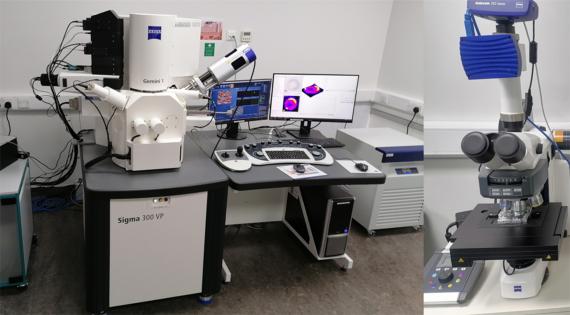Our Centre for Multimodal Correlative Microscopy and Spectroscopy (CoreMiS) is the first platform in the UK dedicated to micro-spectroscopic analysis of environmental samples by Raman Imaging and Spectroscopy with Scanning Electron Microscopy and Energy Dispersive X-ray Spectroscopy (RISE-EDS).
RISE-EDS allows us to see in tiny detail chemical reactions in water, atmosphere, soil, plants and to investigate the effect of pollution and climate change on:
- Form and structure of samples
- Elemental composition
- Molecular changes
As such, it has applications across many different sectors including the water industry, food, health, agriculture, microbiology and nanotechnology.
CoreMiS brings together RISE-EDS and Fluorescence Light Microscopy (RISE-EDS-LM) as a single analytical suite. It provides one set of equipment for combined analysis of environmental samples like sewage, soil and biological samples, using techniques previously available only as stand-alone approaches. We can analyse mixed samples to meet new requirements.
As a platform dedicated to the study of nanoparticles and nano-scale chemical reactions, CoreMiS brings new technical scope for analysis at the nano-scale with greater detail and complexity than ever.
In summary, CoreMiS offers greater technical ability, opportunity and capability to meet our customer’s complex analysis needs.
A world-leading centre
UKCEH has technical ability in the field of microplastics analysis unavailable elsewhere in the UK.
CoreMiS represents a substantial step forward in capabilities for UK environmental science. Funded by NERC and established by UKCEH, it provides a world-leading centre for particulate pollutant detection and biogeochemical analysis by adding nano-meter scale capability.
It delivers the infrastructure needed to power our world-class science, bringing evidence-based environmental solutions to the problem of plastic pollution so benefiting society.


